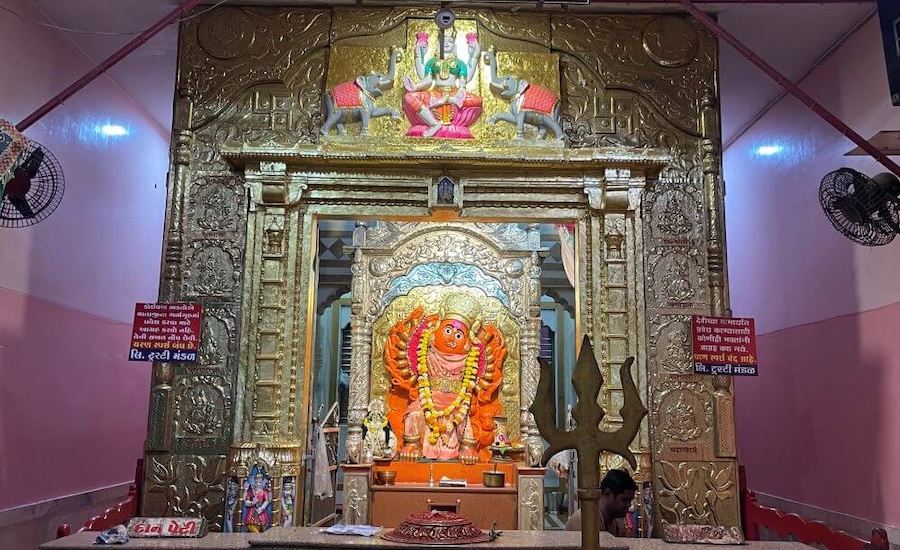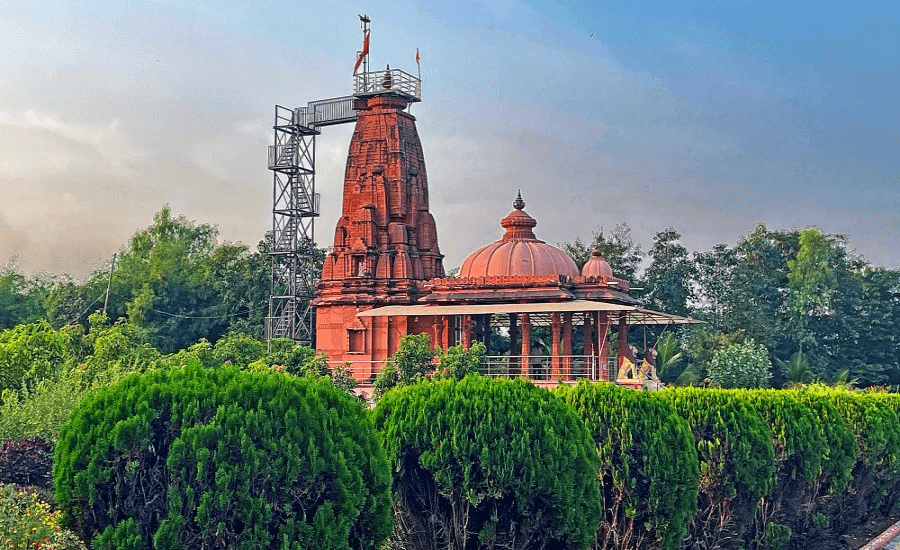
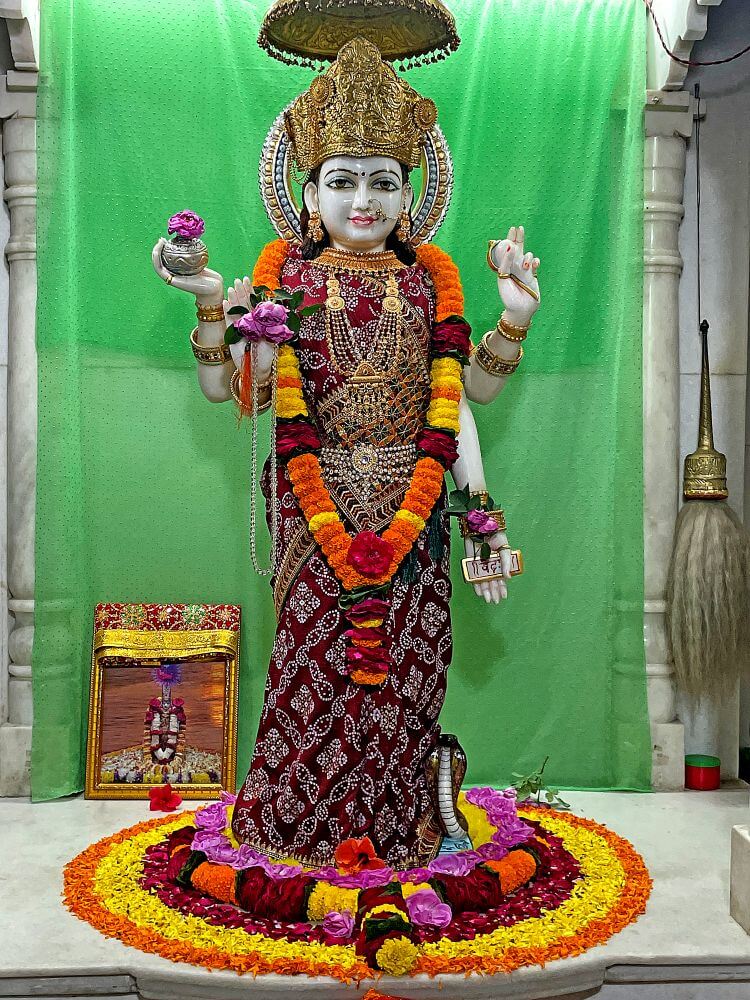 The Tapi River, one of India’s significant rivers, is considered the lifeline of Surat. The river holds both mythological and geographical importance, and there are several temples dedicated to Tapi Mata across Surat district. Among them, the Surya Putri Tapi Mata Temple in Machhi village, Kamrej taluka, is highly revered. This is a site of spiritual and cultural significance, embodying the devotion to the Tapi River and its mythical origins. Devotees who venerate the Tapi River flock to this temple, especially during the grand celebrations of Ashadha Shukla Saptami (the seventh day of the waxing moon in the month of Ashadha), the river’s auspicious birth anniversary.
The Tapi River, one of India’s significant rivers, is considered the lifeline of Surat. The river holds both mythological and geographical importance, and there are several temples dedicated to Tapi Mata across Surat district. Among them, the Surya Putri Tapi Mata Temple in Machhi village, Kamrej taluka, is highly revered. This is a site of spiritual and cultural significance, embodying the devotion to the Tapi River and its mythical origins. Devotees who venerate the Tapi River flock to this temple, especially during the grand celebrations of Ashadha Shukla Saptami (the seventh day of the waxing moon in the month of Ashadha), the river’s auspicious birth anniversary.
The Tapi River, also referred to as Tapti, Tapika, and Tapini, is mentioned in several Hindu scriptures, including the Bhavishya Purana, Skanda Purana, and the Mahabharata. Additionally, the Tapi Mahatmya and Tapi Purana highlight its significance. Tapi is regarded as the daughter of the Sun God, Surya. According to mythology, Surya married Sanjana, the daughter of the divine architect Vishwakarma. The couple had two children, Kalindi and Yama. However, unable to withstand Surya’s intense heat, Sanjana left her duties to her shadow (Chhaya), taking the form of a mare and retreating for penance. Assuming Sanjana’s guise, Chhaya served Surya and bore him two children, Shani (Saturn) and Tapti (Tapi).
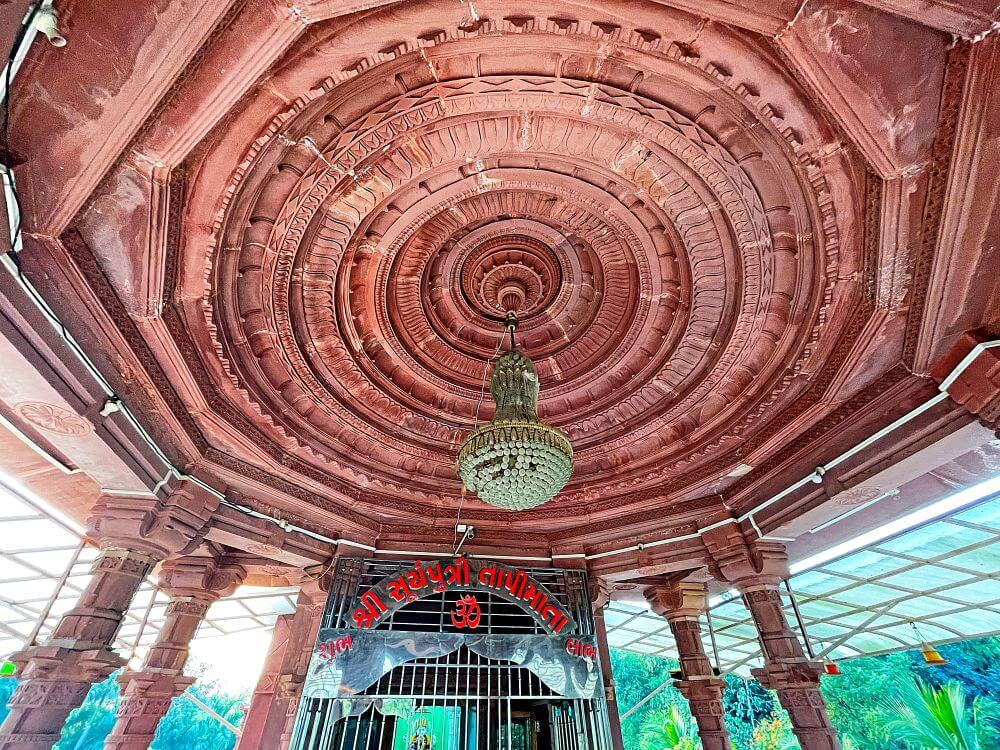 According to Tapi Mahatmya, Tapi was born on Ashadha Shukla Saptami at noon. Upon her birth, she pacified Brahma’s penance. She was blessed by Surya to descend to Earth as a river. He instructed her to flow westward from the Vindhya mountain to benefit humanity. The Tapi River originates in Multai, Betul district, Madhya Pradesh, and flows for 724 kilometres through Madhya Pradesh, Maharashtra, and Gujarat before merging into the Arabian Sea. Surat, located on its banks, is also called Suryapur in honour of the Sun God. Among the many temples dedicated to Tapi Mata, the one in the tribal village of Machhi holds special prominence.
According to Tapi Mahatmya, Tapi was born on Ashadha Shukla Saptami at noon. Upon her birth, she pacified Brahma’s penance. She was blessed by Surya to descend to Earth as a river. He instructed her to flow westward from the Vindhya mountain to benefit humanity. The Tapi River originates in Multai, Betul district, Madhya Pradesh, and flows for 724 kilometres through Madhya Pradesh, Maharashtra, and Gujarat before merging into the Arabian Sea. Surat, located on its banks, is also called Suryapur in honour of the Sun God. Among the many temples dedicated to Tapi Mata, the one in the tribal village of Machhi holds special prominence.
According to legend, a village once thrived near this site, but the inhabitants relocated after a devastating flood. Initially, the river goddess was worshipped under a tree in the vicinity.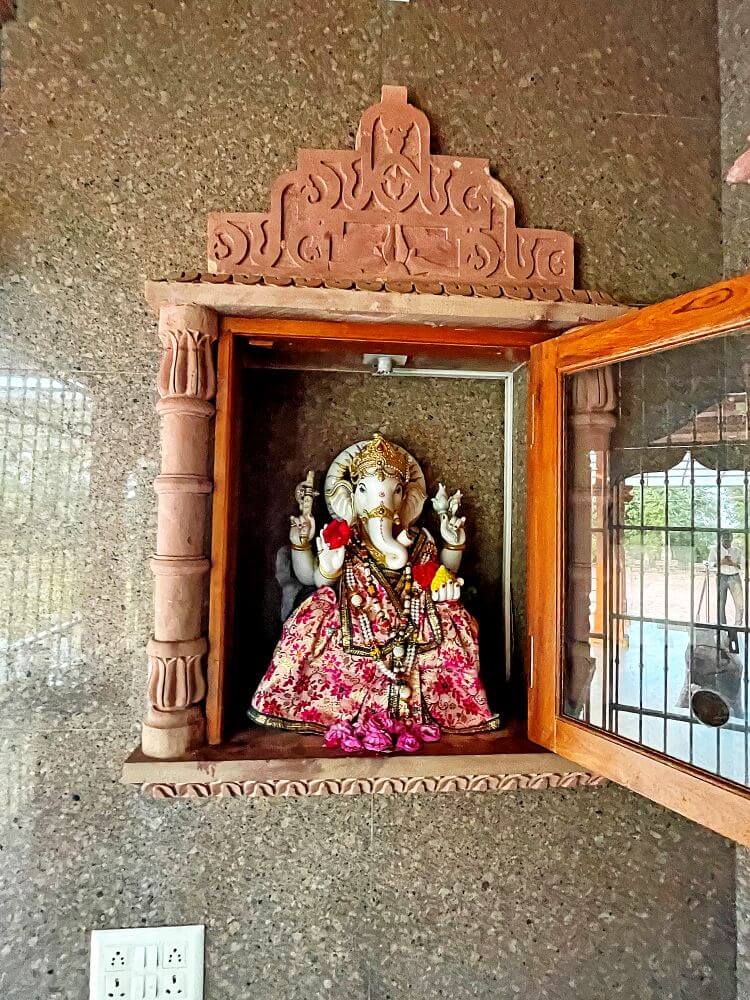 Over time, a devotee spearheaded the construction of a shrine for Tapi Mata. The temple has undergone multiple renovations, the most recent being in 2016. Built in the Rajasthani architectural style, the temple uses sandstone sourced from Bharatpur, Rajasthan, and features intricate carvings crafted by Rajasthani artisans.
Over time, a devotee spearheaded the construction of a shrine for Tapi Mata. The temple has undergone multiple renovations, the most recent being in 2016. Built in the Rajasthani architectural style, the temple uses sandstone sourced from Bharatpur, Rajasthan, and features intricate carvings crafted by Rajasthani artisans.
The temple is set amidst a serene and picturesque environment. A beautifully landscaped garden with vibrant flowers enhances the temple’s surroundings. The approach to the temple and the courtyard is paved with interlocking tiles.
Situated on a high plinth, the temple features towering spires and secondary domes. It is structured with a Mukhamandapa (entrance porch), Sabhamandapa (assembly hall), Antarala (antechamber), and Garbha Griha (sanctum). The Mukhamandapa and Sabhamandapa are crowned by domed spires adorned with Amalak (stone discs) and Kalasha (pinnacles). The temple’s main spire follows the Ardhvodhara style (rising straight before curving inward near the top) and the Urushringa style (smaller spires encircling the central spire). Niches on all four sides of the spire house idols of various deities.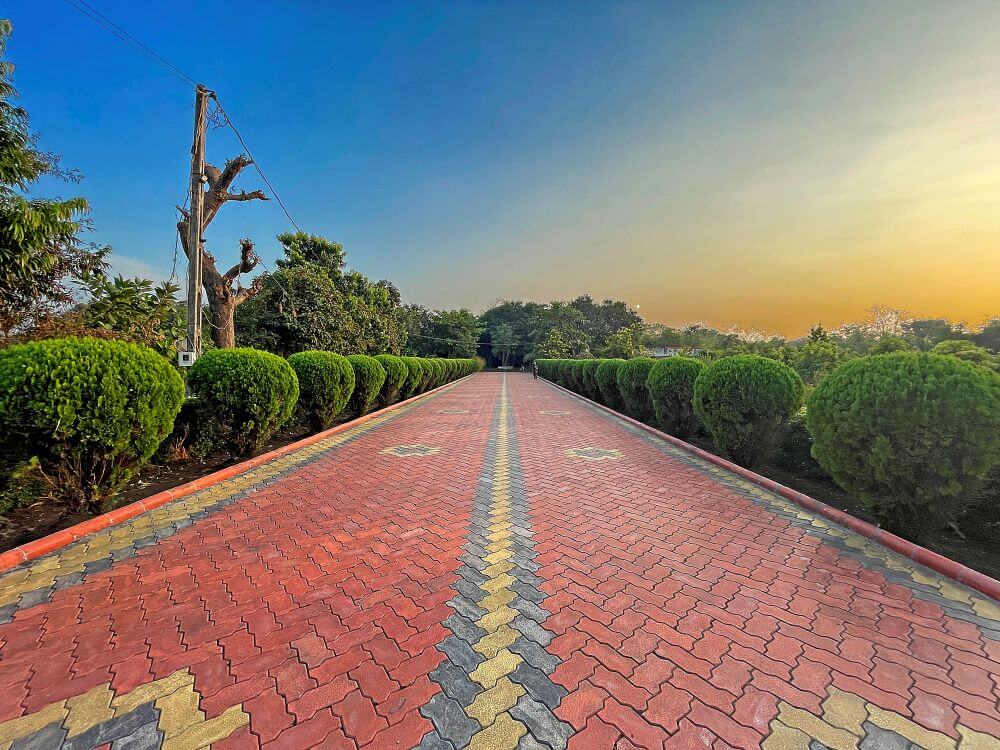
The temple is approached by nine steps, flanked by sculptures of lions on the parapets. The open Sabhamandapa features intricately carved columns and ceilings. In the Antarala , a niche on the left houses an idol of Ganesha, while Hanuman’s idol is enshrined in a niche on the right. The entrance to the sanctum is adorned with carvings of serpents, the Sun, and floral patterns. The door frame features tall relief sculptures of Dvarapalas (door guardians).
Inside the sanctum, a high pedestal supports a silver canopy enshrining a serene marble idol of Tapi Mata. The four-armed idol holds a silver urn in the upper left hand, a conch in the upper right, a scripture in the lower right, and the lower left hand is in a blessing pose. The idol is adorned with a golden crown and shaded by a decorative umbrella. Below, there are brass idols of Tapi Mata, Ganesha, and Hanuman. A circumambulatory path around the sanctum begins in the Sabhamandapa .
The Ashadha Shukla Saptami festival is a major event at the temple, drawing devotees from nearby villages and towns. On this day, devotees perform a ceremonial walk from the temple to the banks of the Tapi River. Here, they offer Aarti (ritual prayer) and drape the river with a Chunari (a decorative scarf). Religious programmes, including devotional songs and rituals, are conducted at the temple, and Mahaprasad (blessed food) is distributed to devotees.
